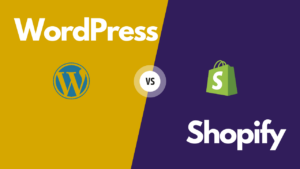I. Introduction
In the dynamic world of web development, Content Management Systems (CMS) play a pivotal role in simplifying the process of creating, managing, and updating websites. As the digital landscape continues to evolve, businesses and individuals alike seek efficient website management solutions that cater to their unique needs. This article aims to delve into the realm of Content Management Systems, exploring their significance, key features, and how they empower users to build and maintain websites with ease.
II. Types of Content Management Systems
Content Management Systems come in various flavors, catering to different user requirements. In this section, we will explore two primary types of CMS:
A. Open Source CMS Platforms
1. WordPress: The World’s Leading CMS
2. Joomla: A Versatile and Powerful CMS
3. Drupal: The Robust and Scalable CMS Solution
B. Proprietary CMS Platforms
1. Wix: A User-Friendly Website Builder
2. Squarespace: An All-in-One Website Building Platform
3. Others: A Brief Overview of Other Proprietary CMS Options
III. Features and Functionality of CMS Platforms
CMS platforms are packed with features that simplify website development and content management. In this section, we will explore the essential functionalities offered by CMS:
A. Website Building and Template Selection
B. Content Creation and Publishing
C. User and Role Management
D. Media Management: Images, Videos, and Documents
E. Version Control and Revision History
F. Multilingual Support: Reaching Global Audiences
IV. Customization Options and Flexibility
Every website has its unique identity and brand image. In this section, we will delve into the customization options offered by CMS platforms, allowing users to personalize their websites according to their preferences:
A. Themes and Templates: Pre-designed Layouts for Quick Setup
B. Layout Customization: Tailoring Designs to Match Brand Identity
C. Extensibility through Plugins and Extensions: Adding Extra Functionality
D. Custom Code Integration: Developers’ Playground for Total Control
V. User-Friendly Interface and Ease of Use
CMS platforms are designed to cater to users of all skill levels, even those without technical expertise. This section explores how user-friendly interfaces contribute to a positive user experience:
A. Dashboard and Admin Panel: Centralized Website Management
B. Content Editing and Formatting: Intuitive and Familiar Tools
C. Drag-and-Drop Functionality: Simplifying Website Design
D. User Training and Onboarding: Helping Users Get Started
VI. E-commerce Integration with CMS
For businesses seeking to expand their online presence, e-commerce integration within a CMS is essential. This section will cover how CMS platforms facilitate e-commerce capabilities:
A. E-commerce Capabilities in CMS Platforms: Building Online Stores
B. Payment Gateways and Shopping Cart Integration: Secure Transactions
C. Managing Product Listings and Inventory: Streamlined Inventory Control
VII. SEO Optimization Features
In the competitive online landscape, search engine visibility is crucial for website success. This section explores how CMS platforms aid in optimizing websites for search engines:
A. Built-in SEO Tools and Settings: Enhancing Website Discoverability
B. URL Structure and Permalinks: Creating SEO-Friendly URLs
C. Metadata Management: Customizing Title Tags and Meta Descriptions
D. XML Sitemaps and Search Engine Indexing: Facilitating Crawling
VIII. Security Measures and Vulnerability Management
Security is a top priority in website management, and CMS platforms implement various security measures to safeguard websites. In this section, we will explore:
A. Security Features in CMS Platforms: Protecting Website Data
B. Regular Updates and Patches: Staying Ahead of Vulnerabilities
C. User Authentication and Access Control: Managing Permissions
D. Handling Security Vulnerabilities: Proactive Mitigation
IX. Support and Community
When using a CMS, access to support and a thriving community is valuable. This section will discuss the various support options available:
A. Official Support Channels: Getting Help Directly from CMS Providers
B. Online Documentation and Tutorials: Self-Help Resources
C. User Forums and Community Support: Learning from Fellow Users
X. Comparison of Popular CMS Platforms
In this section, we will compare the leading CMS platforms to help users make informed decisions based on their specific needs:
A. WordPress vs. Joomla vs. Drupal: Strengths and Use Cases
B. Wix vs. Squarespace: A Comparison of Proprietary Platforms
C. Selecting the Right CMS for Your Specific Needs: Weighing the Pros and Cons
XI. Future Trends in CMS Development
The world of CMS is ever-evolving, and this section will explore some emerging trends that will shape the future of CMS:
A. Headless CMS and Decoupled Architecture: Separating Frontend and Backend
B. AI and Machine Learning Integration: Automating Content Management
C. Mobile-First Approach and Responsive Design: Prioritizing Mobile Users
XII. Case Studies: Successful Websites Built on CMS Platforms
Real-life examples of successful websites built on CMS platforms illustrate the versatility and scalability of these solutions. This section will showcase notable websites powered by various CMS platforms.
XIII. Conclusion
In conclusion, Content Management Systems are powerful tools that simplify website management and empower users to create impressive online experiences. From open-source solutions like WordPress, Joomla, and Drupal to proprietary platforms like Wix and Squarespace, CMS options cater to diverse needs. With features ranging from e-commerce integration to SEO optimization and security measures, CMS platforms remain essential for web development in the digital age. As technology continues to advance, CMS platforms will undoubtedly play an increasingly critical role in shaping the future of website management and online presence. Embracing a Content Management System is a step toward a seamless and efficient website management journey.





